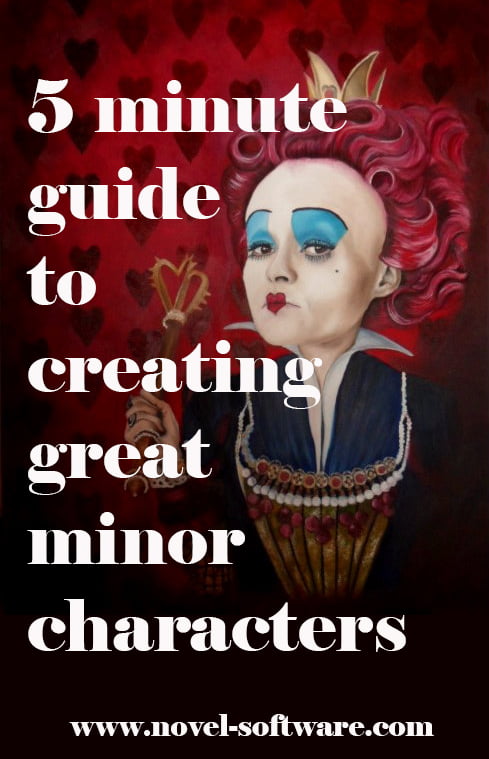
5 minute guide to creating great minor characters

Cameo characters are minor characters who only have a very small part to play in your story, usually to facilitate the plot or demonstrate some aspect of another, more major, character’s personality.
If you’re a dedicated novelist, you’ll usually write a great deal of detail and back story about all your major characters, including history, ancestry, education, preferences, characteristics, what’s in their fridge and all that.
But is that really necessary to that for every single character that appears?
My view is that it’s not, and also that it’s also not necessary to make such an effort make sure all cameo characters are completely unique, balanced and whole human beings (or aliens or hamsters of whatever).
Your main characters have to be filled with conflicts and contradictions and not just fall into the tired old tropes or people will get bored. However, it’s not necessary to do the same with minor or supporting characters, and in fact there are arguments for keeping these characters simple.
The fact is that in real life, we don’t get to know all the nuances and conflicts that are contained within everyone, and we often will put them in one stereotype box or another for ease of reference, and then move on. Obviously, if we get to know them better, we will learn that there is far more to everyone. At that point they cease to become passing acquaintances (or supporting / minor characters) and start to become friends (or major characters).
If you try to make every supporting character too complex, your readers will start to get exhausted trying to keep up with all the nuances, and may lose the plot.
Also, you don’t spend too long on your minor characters, for other reasons. You don’t have time, for one. Writing a novel is enough of a time-consuming gruelling job without spending a lot of effort on something that’s not giving you a decent ‘return-on-investment’.
Finally, you don’t want them to steal the show. If a minor character seems to be becoming very complex, perhaps they should be promoted and given a more major role.
However – you don’t want them to be cardboard cut outs, and they’ve got to be interesting or readers will get bored.
Don’t make them too complex, don’t make them too simple – will we ever be satisfied?!
Well, the key is to appeal to tropes and stereotypes that will make them feel immediately feel familiar to the reader, but subvert one of two of the stereotypical features, in order to make the character fresh and appealing.
For example, you could have an old hag, but perhaps she dresses in very bright colours, or has a beautiful singing voice.
Or, maybe the character is a tweed, elbow-patch wearing professor, but he’s completely obsessed with football.
One last thing to say about cameo characters – it is a great opportunity to come up with totally over the top characters for light relief. If a main character is too much of a caricature, then they will probably become tiresome after a while and stop feeling real. But with a supporting character you can give them all kinds of eccentricities, because they’ll only be there long enough to amuse and then they will shuffle off on their way, their bit part complete.
Do you have any useful tips for writing minor characters? Let us know in the comments below!
And if you found this article useful, please use the social media buttons to like and share it. Thanks!
